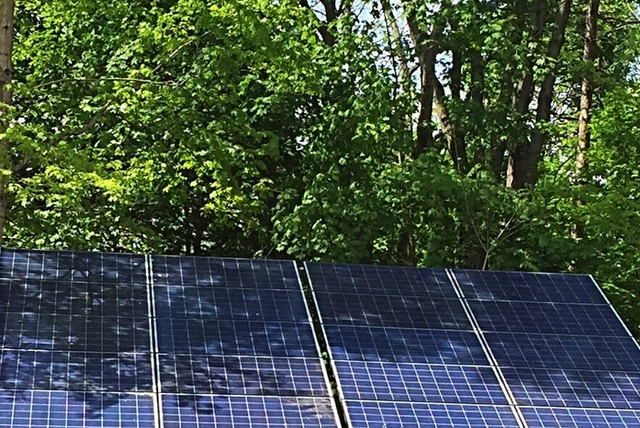Measurements providing the solar potential of a roof are a crucial piece of information that installers, private financing firms, and government rebate authorities rely upon in designing solar systems, and issuing financing and rebates for their installation. And they can be a pain to get done — an expensive — unless you are using software approved by those rebate authorities to avoid physically going to the site.
For instance, the Connecticut Green Bank became the latest such authority to declare Aurora Solar‘s remote shading simulation software an acceptable replacement for the time-consuming and costly onsite inspections. Aurora incorporates the measurements of a site’s solar potential as part of a standardized “Solar Shade Report” that consolidates all the information solar companies need in making financing, installation, and rebate decisions.
Aurora’s novel methodology relies on algorithmically generating a 3D reconstruction of a building, and then simulating the sun’s path over the site in order to determine the roof’s solar potential. Using Aurora’s algorithms, anyone with web access can quickly generate an accurate report detailing the irradiance and shading of any surface in the world.
The results of Aurora’s web-based software are accurate and reliable enough to replace measurements collected through a physical site visit and inspection, and the company as now amassed acceptance from a ton of rebate authorities, including:
• CT Green Bank
• New York State Energy Research and Development Authority (NYSERDA)
• Rhode Island Renewable Energy Fund
• Massachusetts Clean Energy Center (MassCEC)
• New Jersey Clean Energy Fund
• City of Roseville Residential Solar Energy Program
• Oncor
• Energy Trust of Oregon
In addition, the US Department of Energy’s National Renewable Energy Lab (NREL) has validated that Aurora Solar’s shade reports are statistically equivalent to on-site measurements. Accordingly, NREL estimates that Aurora with its remote shading analysis can save installers $0.17/W on a 5-kW system (~$850 per install).
While prices for solar hardware have fallen by over 70% in the past 10 years, “soft costs” have remained stubbornly high due to these on-site surveys and other related activities, inhibiting residential adoption. These soft costs now comprise more than half the cost of a typical solar installation. Being able to quickly and accurately calculate a roof’s solar potential promises to slash the expense involved in quoting a solar installation.
— Solar Builder magazine


Leave a Reply
You must be logged in to post a comment.